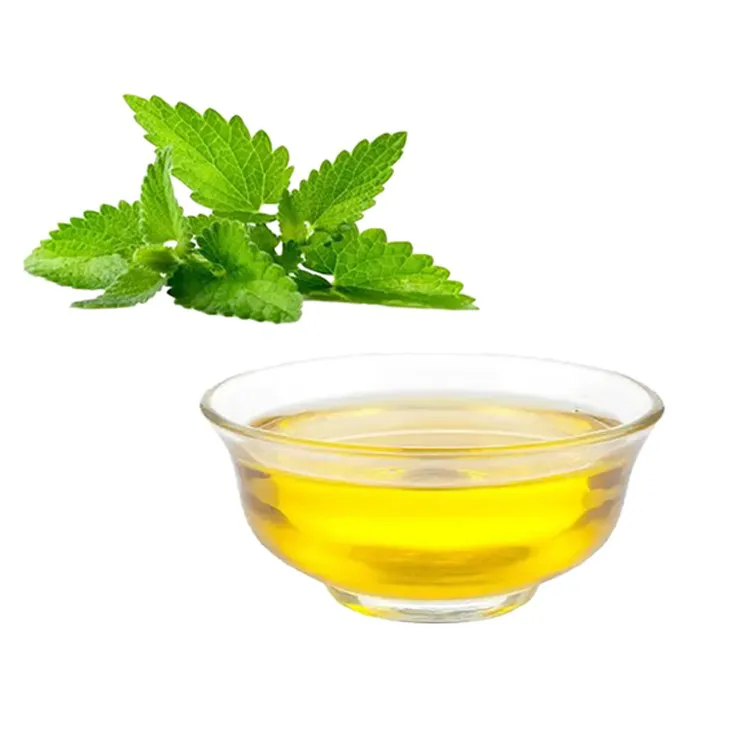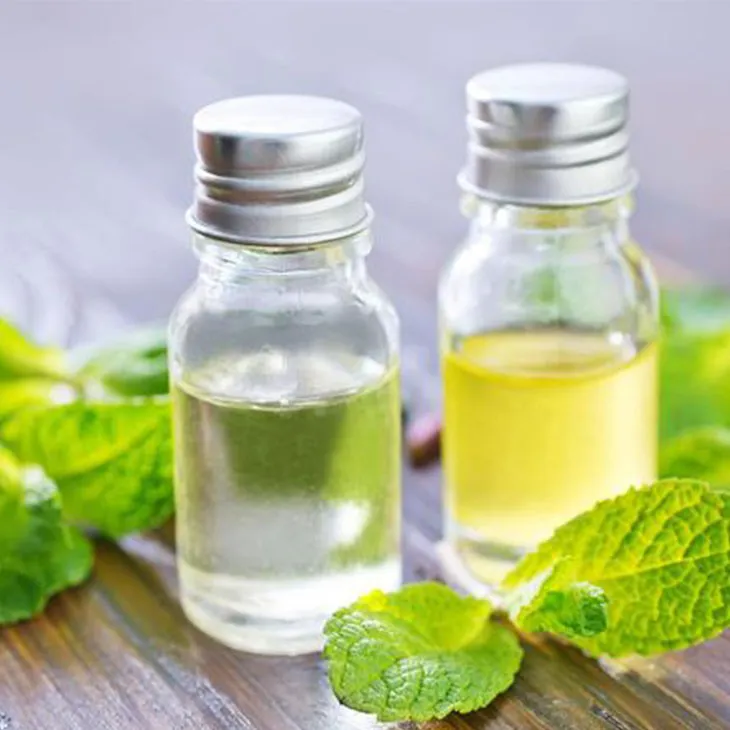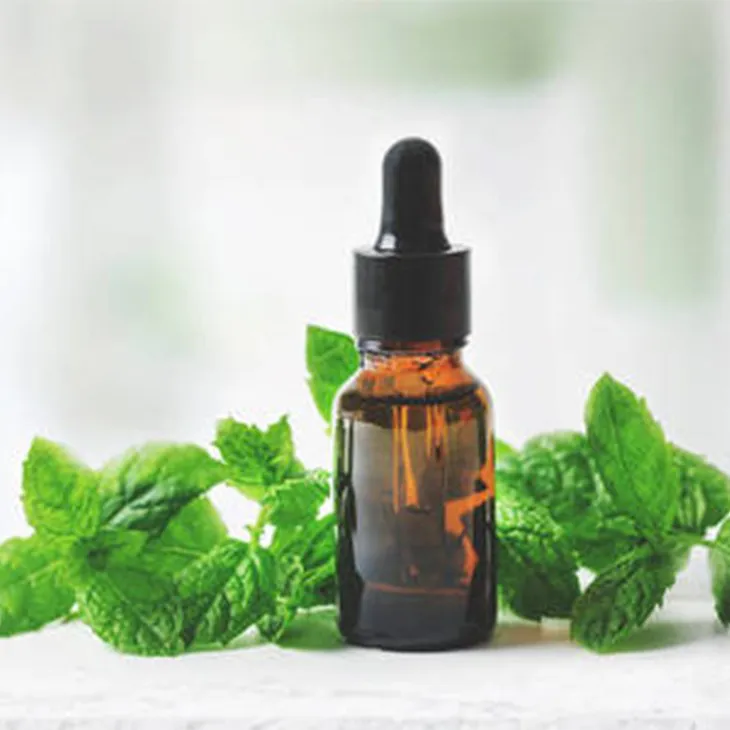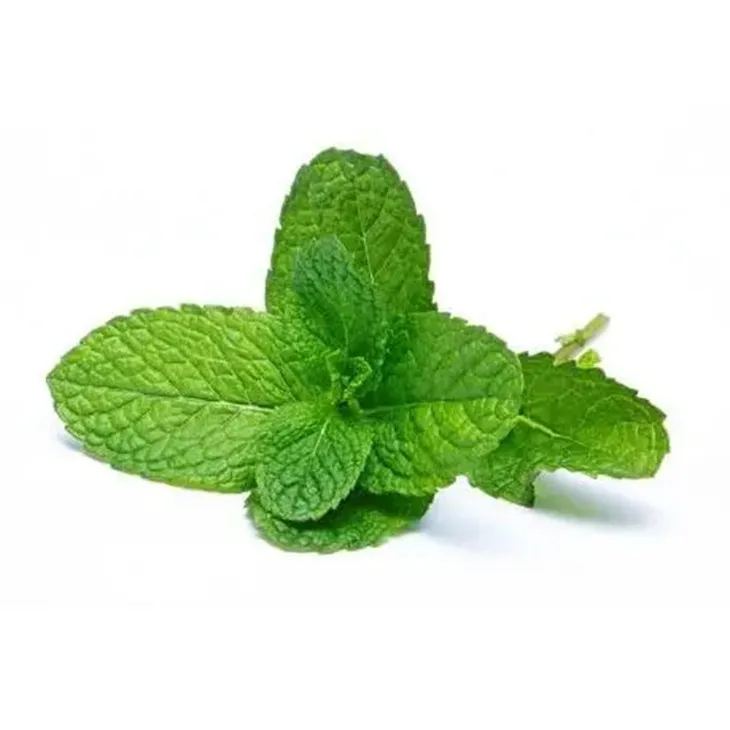- 0086-571-85302990
- sales@greenskybio.com
Mint Mastery: A Step-by-Step Guide to Peppermint Oil Extraction
2024-07-20

1. Introduction to Peppermint
Peppermint (Mentha × piperita) is a hybrid mint, a cross between watermint and spearmint. It is a perennial plant that is widely recognized for its refreshing aroma and various therapeutic properties.
Appearance: Peppermint plants typically grow to be about 1 - 3 feet tall. They have square stems, which is a characteristic feature of the mint family. The leaves are dark green, lance - shaped, and have serrated edges.
Growth Conditions: Peppermint thrives in moist, well - drained soil and prefers partial shade. It can also tolerate full sun in cooler climates. The plant is native to Europe and the Middle East but is now cultivated worldwide.
Chemical Composition: The key components that contribute to the unique properties of peppermint are its essential oil constituents. The main ones include menthol, menthone, and menthyl acetate. Menthol is responsible for the cooling sensation that peppermint is well - known for, while menthone and menthyl acetate also play important roles in its aroma and therapeutic effects.

2. Why Extract Peppermint Oil?
Peppermint Oil has a wide range of applications, which makes its extraction a valuable process.
2.1 Aromatherapy
In aromatherapy, Peppermint Oil is highly regarded. The refreshing aroma of peppermint has a stimulating effect on the mind, helping to improve concentration and reduce mental fatigue. It can also be used to relieve stress and anxiety when diffused in a room or applied in a diluted form during a massage.
2.2 Medicinal Uses
Peppermint oil has several medicinal properties. It is often used to relieve digestive problems such as indigestion, bloating, and nausea. When applied topically, it can provide relief from muscle pain, itching, and headaches. Its antimicrobial properties also make it useful in treating minor skin infections.
2.3 Cosmetic and Skincare
In the cosmetic industry, peppermint oil is used in various products. It is added to shampoos, conditioners, and body washes for its pleasant scent. It also has a cooling and refreshing effect on the skin, making it suitable for products aimed at providing a rejuvenating experience. Additionally, it can help in controlling scalp conditions like dandruff due to its antimicrobial and anti - inflammatory properties.
2.4 Culinary Applications
Peppermint is a popular flavor in the culinary world. The oil can be used sparingly in cooking to add a fresh, minty flavor to dishes. It is often used in desserts, such as ice creams and chocolates, and in beverages like teas and cocktails.

3. Traditional Methods of Peppermint Oil Extraction
There are several traditional methods for extracting peppermint oil, each with its own characteristics.
3.1 Steam Distillation
Steam distillation is one of the most common methods for extracting essential oils, including peppermint oil.
- Harvesting: First, the peppermint plants are harvested at the appropriate time. The best time to harvest is usually when the plants are in full bloom. This is when the essential oil content is at its highest.
- Preparation: The harvested plants are then cleaned to remove any dirt, debris, or damaged parts. They are usually chopped or bruised slightly to break the cell walls and release the essential oil more easily during the distillation process.
- The Distillation Process:
- The prepared plant material is placed in a distillation apparatus. Water is added to the bottom part of the apparatus, and heat is applied. As the water boils, steam is produced.
- The steam passes through the plant material, causing the essential oil droplets to vaporize along with the steam.
- The vapor mixture of steam and essential oil then travels through a condenser. In the condenser, the vapor is cooled and turns back into a liquid state.
- The resulting liquid, which is a mixture of water and peppermint oil (known as a hydrosol), is collected in a receiving flask.
- Separation: The final step in steam distillation is to separate the peppermint oil from the water. Since oil and water do not mix, they can be separated using a separating funnel. The peppermint oil, which is lighter than water, will float on top and can be carefully collected.
3.2 Solvent Extraction
Solvent extraction is another method used for peppermint oil extraction.
- Harvesting and Preparation: Similar to steam distillation, the peppermint plants are harvested and prepared. However, in solvent extraction, the plant material may need to be dried and ground into a fine powder for better extraction efficiency.
- Solvent Selection: A suitable solvent, such as hexane or ethanol, is selected. The choice of solvent depends on various factors, including its ability to dissolve the essential oil, its toxicity, and its cost.
- The Extraction Process:
- The ground plant material is placed in a container, and the solvent is added. The mixture is then stirred or shaken thoroughly to ensure that the solvent comes into contact with all parts of the plant material.
- The solvent extracts the essential oil from the plant material over a period of time. The length of time depends on factors such as the type of plant material, the solvent used, and the temperature.
- Separation: After the extraction is complete, the mixture of solvent and essential oil (along with other plant extracts) needs to be separated from the plant material. This can be done by filtration.
- Removal of Solvent: To obtain the pure peppermint oil, the solvent must be removed from the extract. This is usually done through evaporation under reduced pressure to avoid overheating the essential oil, which could cause degradation.
3.3 Cold - Press Extraction
Cold - press extraction is mainly used for citrus fruits but can also be applied to peppermint in some cases.
- Harvesting: Fresh peppermint leaves are harvested.
- Pressing: The leaves are placed in a press, and mechanical pressure is applied. This pressure squeezes out the essential oil along with some plant juices.
- Separation: The resulting liquid, which contains the peppermint oil, plant juices, and other substances, needs to be separated. This can be done through centrifugation or filtration to obtain a more concentrated form of the peppermint oil.

4. Modern and Advanced Extraction Techniques
With the advancement of technology, there are some modern techniques for peppermint oil extraction that offer certain advantages over traditional methods.
4.1 Supercritical Fluid Extraction (SFE)
Supercritical fluid extraction is a relatively new and innovative method.
- Supercritical Fluid Selection: Carbon dioxide (CO₂) is the most commonly used supercritical fluid in this process. At certain pressure and temperature conditions, CO₂ reaches a supercritical state, which gives it properties of both a gas and a liquid.
- The Extraction Process:
- The peppermint plant material is placed in an extraction chamber. Supercritical CO₂ is then passed through the chamber. In this state, CO₂ can effectively dissolve the essential oil from the plant material.
- The mixture of supercritical CO₂ and essential oil is then transferred to a separation chamber. By changing the pressure and temperature conditions, the CO₂ returns to its gaseous state, leaving behind the pure peppermint oil.
- Advantages: Supercritical fluid extraction has several advantages. It is a relatively clean process as CO₂ is non - toxic and leaves no residue. It can also be more selective in extracting specific components of the essential oil, and it can operate at lower temperatures compared to some traditional methods, which helps to preserve the quality of the oil.
4.2 Microwave - Assisted Extraction (MAE)
Microwave - assisted extraction is another modern technique.
- Setup: The peppermint plant material is placed in a microwave - compatible container along with a suitable solvent (if required).
- The Extraction Process:
- The container is then placed in a microwave oven. Microwaves are applied, which cause the plant material to heat up rapidly. This rapid heating helps to break the cell walls of the plant more quickly, releasing the essential oil into the solvent (if present) or into the surrounding environment.
- After the extraction process is complete, the resulting mixture is then processed further to separate the peppermint oil from other substances, similar to the separation steps in traditional extraction methods.
- Advantages: MAE can significantly reduce the extraction time compared to traditional methods. It also has the potential to increase the extraction yield as the rapid heating can enhance the mass transfer of the essential oil from the plant material.

5. Factors Affecting Peppermint Oil Extraction
Several factors can influence the quality and quantity of peppermint oil extracted.
5.1 Plant Quality
The quality of the peppermint plants used for extraction is crucial. Plants that are healthy, well - grown, and harvested at the right time will generally yield a higher quality and quantity of essential oil. Factors such as soil quality, water availability, and sunlight exposure can all affect the growth and development of the plants and, consequently, the oil content.
5.2 Extraction Method
As discussed earlier, different extraction methods have different efficiencies and can produce oils with different characteristics. For example, steam distillation may produce an oil with a slightly different aroma and chemical composition compared to solvent extraction. The choice of method should be based on the desired end - use of the oil and the resources available.
5.3 Temperature and Pressure
In extraction methods such as steam distillation and supercritical fluid extraction, temperature and pressure play important roles. Incorrect temperature or pressure settings can lead to incomplete extraction, degradation of the essential oil, or contamination. For example, in steam distillation, if the temperature is too high, it may cause some of the volatile components of the oil to be lost, while in supercritical fluid extraction, precise control of pressure and temperature is necessary to ensure proper extraction.
5.4 Duration of Extraction
The length of time the extraction process is carried out can also affect the yield and quality of the peppermint oil. If the extraction time is too short, not all of the available essential oil may be extracted. On the other hand, if the extraction time is too long, it may lead to over - extraction, which can result in the extraction of unwanted substances or degradation of the essential oil.
6. Quality Control and Testing of Peppermint Oil
Once the peppermint oil has been extracted, it is important to ensure its quality through proper testing and quality control measures.
6.1 Physical Properties Testing
Physical properties such as color, clarity, and density can provide initial indications of the quality of the peppermint oil. For example, pure peppermint oil is usually clear and colorless or has a very pale yellow color. Any deviation from these expected physical characteristics may indicate contamination or improper extraction.
6.2 Chemical Composition Analysis
Chemical analysis is crucial to determine the composition of the peppermint oil. Techniques such as gas chromatography - mass spectrometry (GC - MS) can be used to identify and quantify the various components in the oil. This helps to ensure that the oil contains the appropriate levels of key constituents such as menthol, menthone, and menthyl acetate, which are important for its aroma and therapeutic properties.
6.3 Microbiological Testing
Microbiological testing is necessary to check for the presence of harmful microorganisms in the peppermint oil. Since the oil may be used in various applications, including those related to human health (such as in aromatherapy and medicinal products), it is important to ensure that it is free from bacteria, fungi, and other pathogens.
6.4 Sensory Evaluation
Sensory evaluation, which involves the assessment of the aroma and flavor of the peppermint oil by trained panelists, is also an important part of quality control. The oil should have the characteristic refreshing peppermint aroma and flavor. Any off - odors or flavors may indicate problems with the extraction process or contamination.
7. Conclusion
Peppermint oil extraction is a complex but rewarding process. Whether for personal use in aromatherapy or for large - scale production in various industries, understanding the different aspects of peppermint plants, extraction methods, factors affecting extraction, and quality control is essential. By following the proper steps and using the appropriate techniques, one can ensure the production of high - quality peppermint oil that can be used for its numerous beneficial applications.
FAQ:
What are the characteristics of peppermint plants?
Peppermint plants are known for their square stems, aromatic leaves, and a distinct minty smell. They typically have serrated leaves and can grow in a variety of climates. Peppermint plants are also relatively easy to cultivate, preferring well - drained soil and partial sunlight.
What are the common extraction techniques for peppermint oil?
One common method is steam distillation. In this process, steam is passed through the peppermint plant material. The heat causes the essential oil to vaporize along with the steam. Then, through condensation, the vapor is turned back into a liquid, and the oil is separated from the water. Another technique is solvent extraction, although this is less common for peppermint oil due to potential solvent residues.
Why is peppermint oil valuable in aromatherapy?
Peppermint oil has a refreshing and invigorating scent. In aromatherapy, it can help relieve stress, improve mental focus, and reduce feelings of nausea. Its cooling effect on the skin also makes it useful for relieving headaches when applied topically in diluted form.
How can one ensure accurate extraction of peppermint oil?
To ensure accurate extraction, start with high - quality peppermint plants at the right stage of growth. Use proper equipment for the extraction method chosen, such as a well - functioning steam distillation apparatus. Follow the extraction process precisely, including maintaining the correct temperature and pressure during distillation. Also, ensure proper cleaning of the equipment to avoid contamination.
What are the safety precautions during peppermint oil extraction?
When using steam distillation, be careful of the high - temperature steam to avoid burns. If using solvents in extraction, ensure proper ventilation to prevent inhalation of harmful fumes. Also, when handling the peppermint plants, wear appropriate gloves as some people may have skin sensitivities to the plant material.
Related literature
- Peppermint Oil: Properties and Applications"
- "The Science of Essential Oil Extraction: Focus on Peppermint"
- "Aromatherapy with Peppermint Oil: Best Practices"
- ▶ Hesperidin
- ▶ citrus bioflavonoids
- ▶ plant extract
- ▶ lycopene
- ▶ Diosmin
- ▶ Grape seed extract
- ▶ Sea buckthorn Juice Powder
- ▶ Beetroot powder
- ▶ Hops Extract
- ▶ Artichoke Extract
- ▶ Reishi mushroom extract
- ▶ Astaxanthin
- ▶ Green Tea Extract
- ▶ Curcumin Extract
- ▶ Horse Chestnut Extract
- ▶ Other Problems
- ▶ Boswellia Serrata Extract
- ▶ Resveratrol Extract
- ▶ Marigold Extract
- ▶ Grape Leaf Extract
- ▶ blog3
- ▶ blog4
- ▶ blog5
-
Alfalfa Meal
2024-07-20
-
Saffron Extract Powder
2024-07-20
-
Acerola Juice Powder
2024-07-20
-
Hericium erinaceus extract powder
2024-07-20
-
Hedyotis Diffusa Extract
2024-07-20
-
Epimedium extract powder
2024-07-20
-
Kupilu Extract
2024-07-20
-
Buckthorn bark extract
2024-07-20
-
Moringa powder
2024-07-20
-
Artichoke Extract
2024-07-20





















